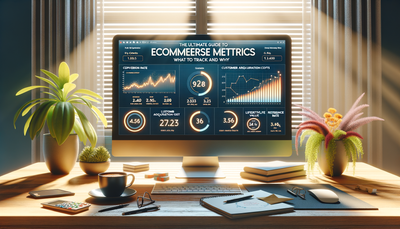Creating an Effective 'Partners' Page for Your Business Website
A well-crafted 'Partners' page can be a powerful asset for your business website, showcasing your collaborative relationships and attracting potential new partnerships. This article explores effective strategies for creating a compelling partners page that highlights your business collaborations and their mutual benefits. We'll discuss how to structure the page, what information to include, and how to leverage this content to strengthen existing partnerships and attract new ones. By implementing these tips, you can transform your partners page into a valuable tool for networking, credibility-building, and business growth.Table of Contents:

The Importance of a Partners Page
A well-designed partners page serves multiple purposes for your business. Firstly, it demonstrates your company's credibility and industry connections, showcasing the quality of organizations you work with. This can enhance trust among potential customers and clients.Secondly, it provides value to your existing partners by giving them exposure on your platform, strengthening your relationships. Lastly, it can attract new partnership opportunities by showcasing the benefits of collaborating with your business.
A partners page is not just a list of logos; it's a strategic tool for relationship management and business growth. When done right, it can significantly contribute to your overall online presence and business success.
Do you need a website? Want to build a website but don't know where to start? Our website builder is the perfect solution. Easy to use, and with the ability to customize to fit your business needs, you can have a professional website in no time.
Structuring Your Partners Page
The structure of your partners page is crucial for its effectiveness. Start with a brief introduction explaining the importance of partnerships to your business and the value you bring to collaborations. This sets the tone for the rest of the page.Consider categorizing your partners if you have many. This could be by industry, partnership type (e.g., technology partners, distribution partners), or any other relevant classification. This makes it easier for visitors to navigate and find relevant information.
For each partner, create a dedicated section or card. Include their logo, a brief description of their business, and most importantly, how you work together. Highlight the mutual benefits of the partnership and any notable achievements or case studies resulting from your collaboration.
Consider adding testimonials from your partners to add credibility and showcase the positive experiences of working with your business.
Highlighting Mutual Benefits
When describing your partnerships, focus on the mutual benefits. This not only showcases the value you bring to collaborations but also demonstrates to potential partners what they could gain from working with you.Be specific about how each partnership works. For example, if you're a software company partnering with a consulting firm, explain how your software enhances their consulting services, and how their expertise helps improve your product.
If possible, include measurable results or success stories. For instance, 'Our partnership with Company X resulted in a 30% increase in efficiency for their clients.' This concrete data helps illustrate the real-world impact of your collaborations.
Remember to keep the tone positive and professional. The goal is to highlight successful collaborations and attract new ones, not to compare or compete with your partners.
Building a website with SITE123 is easy
Design and Visual Elements
The visual appeal of your partners page is just as important as its content. Use high-quality logos of your partners, ensuring they are all of similar size and resolution for a professional look. Consider using a grid or carousel format to display partner logos, allowing visitors to quickly scan your collaborations.Incorporate engaging visuals such as infographics or videos to illustrate partnership successes or collaborative processes. These can break up text and make the page more engaging.
Ensure the page design is consistent with your overall website aesthetic. Use your brand colors and fonts to maintain a cohesive look. Also, make sure the page is mobile-responsive, as many potential partners may view it on various devices.
Consider adding interactive elements, such as filters for different partner categories or a search function if you have numerous partners. This can enhance user experience and make it easier for visitors to find relevant information.
Call-to-Action for Potential Partners
Your partners page should not only showcase existing collaborations but also invite new ones. Include a clear call-to-action (CTA) for businesses interested in partnering with you. This could be a 'Become a Partner' button or a section detailing your partnership program.Provide information on what you look for in a partner and the types of collaborations you're interested in. This helps potential partners understand if they would be a good fit before reaching out.
Include a simple contact form or direct email link for partnership inquiries. Make it as easy as possible for interested parties to get in touch with you. Consider adding a FAQ section addressing common questions about your partnership process.
Remember to regularly update this section with any changes to your partnership criteria or process. Keeping this information current ensures that you attract the most relevant and beneficial partnership opportunities.
Leveraging Your Partners Page for SEO
Your partners page can also contribute to your website's search engine optimization (SEO) efforts. Use relevant keywords in your partner descriptions and partnership explanations. This could include industry-specific terms or phrases related to collaboration and partnerships.Ensure each partner section has a unique URL, allowing search engines to index these pages individually. This can help improve your site's overall SEO performance and potentially attract traffic from searches related to your partners.
If possible, encourage your partners to link back to your partners page from their website. These backlinks can boost your site's authority and improve its search engine rankings. However, ensure these links are natural and comply with search engine guidelines.
Regularly update your partners page with new collaborations or partnership achievements. Fresh content signals to search engines that your site is active and relevant, potentially improving your rankings.
Maintaining and Updating Your Partners Page
A partners page is not a 'set it and forget it' element of your website. Regular maintenance and updates are crucial to keep it effective and relevant. Set a schedule to review and update your partners page, perhaps quarterly or bi-annually.During these reviews, ensure all information is current and accurate. Remove any outdated partnerships and add new ones. Update success stories or case studies with the latest results or achievements.
Reach out to your partners periodically to check if they have new logos, updated company descriptions, or fresh testimonials to add to your page. This not only keeps your page current but also gives you an opportunity to touch base with your partners and maintain those relationships.
Consider featuring different partners on your homepage or in your newsletters on a rotating basis. This can provide extra value to your partners and keep your content dynamic and engaging.





